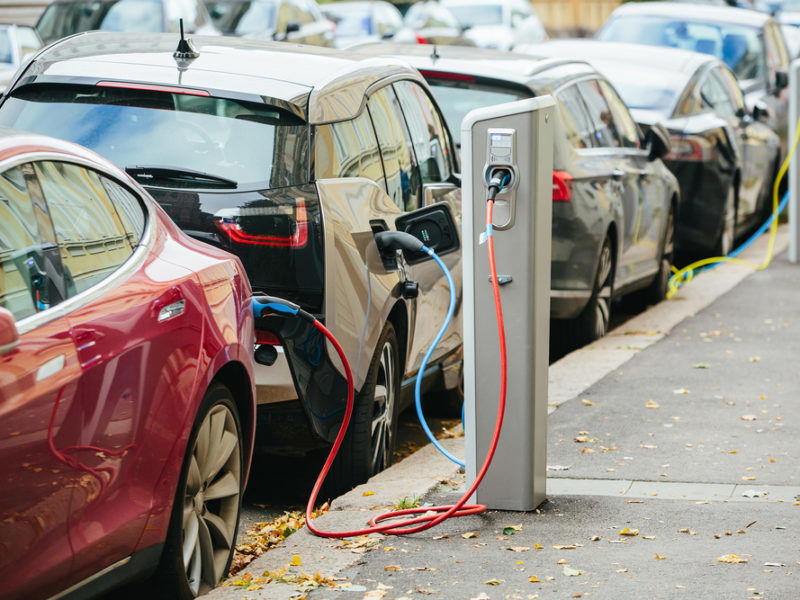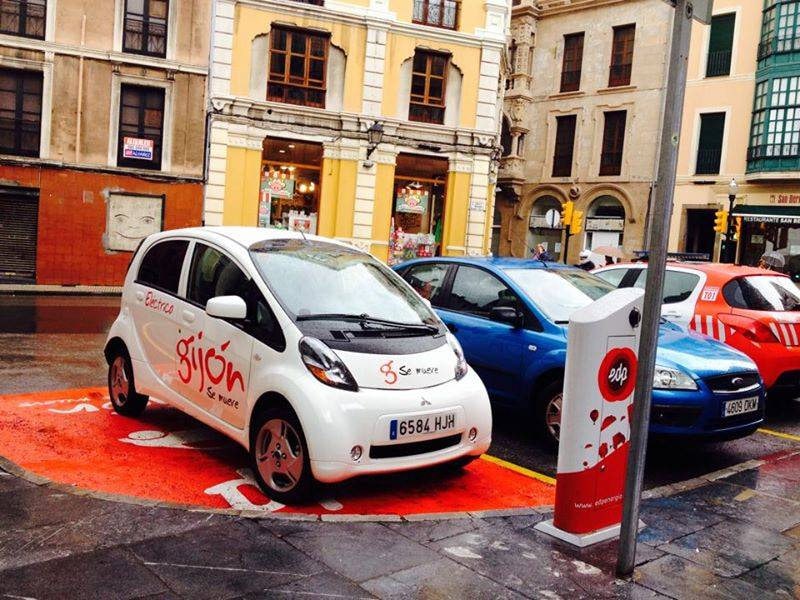An electric car (electric car) can be called the top of civil electric transport. These modern machines provide the right level of comfort for people and carry innovative technical solutions on board. The main elements of the electric car are:
- Battery + charger and inverter,
- Electric motor,
- Transmission (simpler than traditional cars),
- Electronic control system.
The main technical advantage of electric cars over cars is their higher engine efficiency. In this respect, the electric motor is about ten times as efficient as an internal combustion engine (especially gasoline one). Standard electric vehicles are equipped with several electric motors, one per wheel.
This greatly simplifies the transfer of energy to the wheels, increasing the reliability of the machine. Motor-wheels, which are widely used among electric scooters, are practically not used in autocars – this is due to the increased weight of such a wheel, which is certainly reflected in the controllability of the electric car.
The battery charger, like the battery, is located on board the car. The battery charger with inverter is implemented in such a way that it is possible to charge the battery from an ordinary electrical outlet, and the time required for this is several hours. Modern technical solutions, in which the world-famous “Tesla” is the leader, show us that the procedure of “hot” replacement of the electric car is already implemented completely.
To do this, it will be enough to stop by a special service (similar to today’s gas stations), where a special manipulator will remove the discharged battery from the bottom of the car and install a charged one. The procedure takes only 1-1.5 minutes, and the driver does not need to leave the salon.
The inverter on board the car is needed to convert DC to AC, which drives all motors.
Also, all electric cars are equipped with advanced electronic control systems that control active safety, engine operation, battery operation and energy consumption, as well as modes of operation of all components.
Electric Vehicle: Advantages and Disadvantages
Today there is no doubt that electric cars have all chances to become a full-fledged alternative to cars with internal combustion engines in the future. All the world’s car manufacturers have prototypes or are preparing to produce their electric cars, and most of them have fixed these plans in their long-term strategy.
This is primarily due to the fact that the developers of electric cars have practically managed to solve the problem of the car’s autonomy – the range on a single battery charge reaches 400-500 kilometers in favorable climatic conditions, and the cost of ownership is much lower than that of traditional “brothers”.
However, in practice, in addition to the advantages there are disadvantages of electric cars, which deter their widespread use. Let’s consider them in detail:

- The cost of electric cars – it is the price that most often restrains the buyer from buying this tricked-out car. For Russia it is not less than 5-6 million rubles (the same “Tesla”), so that gasoline analogues on this indicator look essentially more attractive. In addition, car manufacturers also offer hybrid solutions (electro+gasoline, for example), which do not lose much to electric cars in terms of energy efficiency.
- Long charging time from the electrical outlet. It will take several hours to fully charge an innovative car, with daily use the owner should have a permanent place to charge the gadget.
- Infrastructure – the network of charging stations for electric cars is not developed even in the USA, not to mention the rest of the world. There are very few hot-swap battery services even for the USA. This makes the electric car “tied” to a certain point of use – usually it is the owner’s garage.
- Autonomy. There are a lot of questions about this aspect of using electric cars. When they talk about the disadvantages of electric cars, they accuse their manufacturers of overestimating the true figures of autonomous mileage. The battery’s operating time in the cold season is almost criticized – the indicator drops by a factor of 2 or more. This makes the owner constantly worried about the level of charge and energy saving of the battery, and not to enjoy the pleasure of operating a technological gadget, as well as real feedback from the owners on the use of electric cars show that the manufacturers, indicating the maximum mileage without charging, severely limit the use of cars – you can not quickly accelerate, develop high speed, etc. It turns out that one of the most attractive advantages of an electric car, “steam engine traction” and outstanding dynamics are available for a very short time. Gasoline competitors are much more attractive in this respect.
The advantages of electric vehicles are related to ease of use, low maintenance, environmental friendliness, quietness and smooth dynamics combined with outstanding power.
Electric Vehicle: Pros and Cons
All of the above is also typical for Russia, where electric cars are gradually penetrating the market through enthusiasts who are ready to pay large sums of money for purchased cars and promoting the use of eco transport. The real practice of using electric cars in our country can be estimated by numerous videos and posts in social networks.
If there is no doubt about the advantages of electric cars, then among the disadvantages that limit the distribution of cars (and this is confirmed by the ignorance of the Russian market by car manufacturers), the lack of infrastructure and cold climate come to the fore.
Shutters
In the future, electric cars will occupy a solid place among the vehicles used by humans, partially replacing traditional cars. The main deterrents of mass penetration of electric cars into the market are their starting price and complexity of use.
For the Russian Federation it is also possible to note the factor of underdevelopment of the culture of electric transport application, which is only now beginning to develop.
It is probably necessary to promote the use of environmentally friendly transport since childhood, promoting its “friendliness” to nature, and then positive changes in terms of infrastructure will appear.

